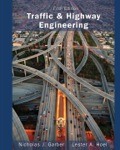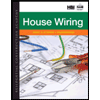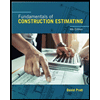
Concept explainers
The difference between short-term and long-term driver expectancy with an example.
Explanation of Solution
Given:
Short-term and long-term driver expectancy.
Drivers depend on their expectations regarding the road layout and road-related examples when driving. Despite data processing and visual inquiry limitations, drivers cope well, even at high speeds, both because roads are generally planned because of driver impediments and because drivers depend on their experience.
Drivers develop both short-term and long-term driver expectancies. Example of short-term expectancies incorporates after going at a moderately fast taking wide distance, that the drivers may expect that the designed ahead road was accommodated to the similar speed.
Example of long-term expectancies incorporate when moving toward convergence, drivers should be in the left path to make a left turn at the crossroad.
Conclusion:
One approach to accommodate for human data processing limitations is to plan roadway conditionsas per driver expectations.
Want to see more full solutions like this?
Chapter 5 Solutions
Traffic and Highway Engineering
- 4 m 100 kN 12 kN/m 5 m -1.5 m-1.5 marrow_forwardQ1) Choose the correct answer: 1- Rankine's theory of earth pressure neglect: The pressure on the wall is to act parallel to the surface of the soil at angle (B) to the horizontal. The effect of cohesion on active and passive pressure. The friction developed between a retaining wall and the soil. o The depth of tension zone. o The effect of water table. 2- The lateral earth pressure is the lateral pressure that developed from: o Water beside it. o Soil beside structure. o External loads. o All the above. o Excavation beside structure. 3- The coefficient of earth pressure at rest represented as o Ko-1-sing expression given by Jaky. o Ko-sing 。 Ko-1-cosp о o Ko-cosp 。 Ko" tano 4- If the backfill carries a uniform surcharge q, then the lateral pressure at the depth of wall His: o pa-Ka yz+Ka q o pa Ka yz-Ka q o pa Ka yz*Ka q o pa Ka yz/Ka q 。 pa=Ka yz+q 5- During the active state of plastic equilibrium, the retaining wall moves: o Towards the fill o Away from the fill o Does not change…arrow_forwardس 1: سم ، خمن كمية الأعمال الترابية اللازمة لتنفيذ جزء من القناة وفقًا للبيانات التالية: عرض القناة = 3م المنحدر الجانبي في الحفر = 1:1 وفي الدفن = 1:1.5 عرض الضفة = 2 م من الجانبين عمق الاملاء الكامل ) full supply depth)= 80 السافة العمودية بين اعلى مستوى للمياه واعلى نقطة في الضفة الجانبية ( free board) = 40 سم، ميل القاعدة = 1:5000 مستوى قاعدة القناة المقترح R.D. (m) 1000 2000 3000 4000 G.L. (m) 210.8 210.4 208.8 208.4 FSD 210= (P.B.L) BANK OF CHANNELarrow_forward
- A 8.5 meter simply supported reinforced concrete beam on parallel rectangular column, where the column width is 300 mm is shown in Figure carries a uniformly distributed variable action of 10 kN/m and permanent action of 9 kN/m (including self-weight of beam). The clear cover of beam for class XC-1 is 25 mm, diameter of main and shear reinforcement are 20 mm and 8 mm respectively. The characteristic material strengths are fck = 30 N/mm² and fyk = 500 N/mm². Apply variable Strut Inclination Method to design the shear reinforcement (links) for the beam. h = 370 mm 마 *b = 230 mm Section A-Aarrow_forwardQ2- For the retaining wall shown in the figure, calculate the magnitude and resultant, of active thrust and calculate only the magnitude of passive thrust. q = 10kN/m² 不 2 m y-18 kN/m³ 0=35° C=0 * 2 m y=18 kN/m³ 0=20° 6 m C=15 kN/m² y=18 kN/m³ 0-20° C=15 kN/m² 2arrow_forwardأ. ما هي شروط حديد التسليح المستخدم في موقع العمل بشكل عام وكيف يجب ان يكون ؟ ب. كم حلقة تحتاج لاساس شريطي طوله 40 مترا اذا كان مكتوب في المخطط ( mm 300 @ 010) ؟ B - لمقطع الأساس الشريطي ادناه، احسب كمية الحديد الطولي السفلي والمواد الانشائية المطلوبة ) سمنت ، رمل ، حصى ( لكل 30 متر طول منه ونسب الخلط 1:3:5 اذا كان حديد التسليح المتوفر طول 9 متر . (15) درجة ) 3014 $10@200mm 4016 800mm A 400mm جدول اوزان حديد اتسليح قطر الشيش (mm) كتلة الشيش (kg/m) 0.222 6 0.395 8 0.617 10 0.888 12 1.21 14 1.58 16 2 18 2.47 20 3.86 25arrow_forward
- A4.2- Develop the column interaction diagram for a tied short column, shown in Figure 2. Given: f'c = 35 MPa fy = 400 MPa Longitudinal bars: 8-35M Ties: 10M@ 300 Clear cover to the ties: 40mm T 500 mm 500 mm Figure 2arrow_forwardA4.3- Design a square short column for P₁ = 1800 kN, Mfx = 250 kN.m, Mfy: f your final design p has to be between 0.01 and 0.02. = 50 kN.m. In Given: f'c = 25 MPa fy = 400 MPa Longitudinal bars: Use 25M Ties: 10M@ 300 Clear cover to the ties: 40mmarrow_forwardA4.1- For a concentrically loaded tied short column, with the cross-section shown in Figure 1, a) Find the axial load resistance of the column; b) Check if the spacing between the longitudinal bars is satisfying code requirements; c) Determine the required spacing between the ties, and sketch the tie arrangement as per the code. Given: f'c = 25 MPa fy = 400 MPa T 550 mm 550 mm Maximum aggregate size: 20mm Longitudinal bars: 8-25M Figure 1 Ties: 10M (ties are not shown on cross-section. The arrangement to be determined in part c) Clear cover to the ties: 40mmarrow_forward
- When using a work breakdown structure (WBS) for a project why it is necessary to break down activities?arrow_forwardAs shown in the figure below, a 1.5 m × 1.5 m footing is carrying a 400 kN load. P Depth (m) 0.0 1.0 2.0 Df Groundwater table (Yw = 9.81 kN/m³) 3.5 Yt = 16.5 kN/m³ E = 9,000 kPa Sandy soil Ysat 17.5 kN/m³ E = 15,000 kPa 6.0 Stiff Clay (OCR = 2) Bedrock Ysat 18.0 kN/m³ eo = 0.8 Cc = 0.15, Cr = 0.02 Eu =40,000 kPa (a) Estimate the immediate settlement beneath the center of the footing. Assuming that Poisson's ratios of sand and soft clay are 0.3 and 0.5, respectively. Use numerical integration approach. For the calculations, use layers (below the bottom of the footing) of thicknesses: 1 m; 1.5 m, and 2.5 m. (b) Determine the primary consolidation settlement beneath the center of the footing. (c) Redo Part (b) if OCR=1.1. Note: Use the 2:1 method to determine the stress increase below the footing. For parts (b) and (c), use the one-dimensional consolidation theory.arrow_forwardConsider the cross-sections illustrated in the next slides. Implement a cross-sectional analysis based on a layered discretisation of the cross- section as required at the following. 1) Develop the implementation of an analysis to estimate the nonlinear response of the composite steel-concrete section, of the reinforced concrete section and of the steel section shown in following slides (using material nonlinear models provided in the support files). Provide the details of the numerical implementation with clear explanations of all steps. Hint: the implementation can be done in Excel. 2) Discuss how the 3 cross-sections (shown in the next slides) compare to each other in terms of embodied carbon under the condition that the cross-sections possess the same nominal moment capacity (i.e. the peak moment achieved in the moment-curvature diagram). The discussion should include at least 2 sets of the sections (each set contains one composite section, one reinforced concrete section and one…arrow_forward
 Traffic and Highway EngineeringCivil EngineeringISBN:9781305156241Author:Garber, Nicholas J.Publisher:Cengage Learning
Traffic and Highway EngineeringCivil EngineeringISBN:9781305156241Author:Garber, Nicholas J.Publisher:Cengage Learning Engineering Fundamentals: An Introduction to Engi...Civil EngineeringISBN:9781305084766Author:Saeed MoaveniPublisher:Cengage Learning
Engineering Fundamentals: An Introduction to Engi...Civil EngineeringISBN:9781305084766Author:Saeed MoaveniPublisher:Cengage Learning Residential Construction Academy: House Wiring (M...Civil EngineeringISBN:9781285852225Author:Gregory W FletcherPublisher:Cengage Learning
Residential Construction Academy: House Wiring (M...Civil EngineeringISBN:9781285852225Author:Gregory W FletcherPublisher:Cengage Learning Fundamentals Of Construction EstimatingCivil EngineeringISBN:9781337399395Author:Pratt, David J.Publisher:Cengage,
Fundamentals Of Construction EstimatingCivil EngineeringISBN:9781337399395Author:Pratt, David J.Publisher:Cengage,



